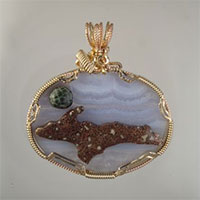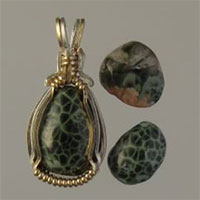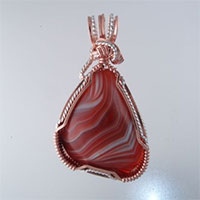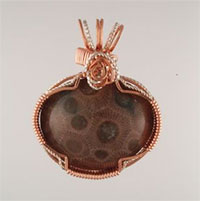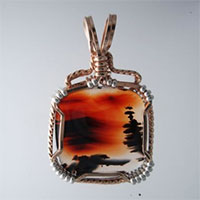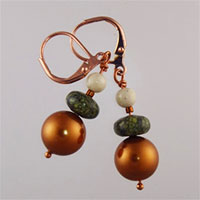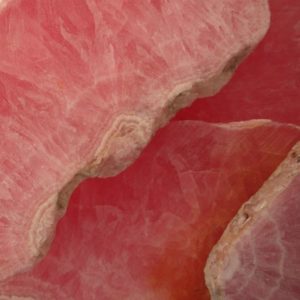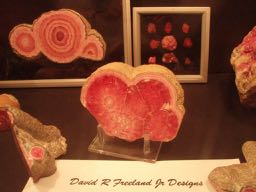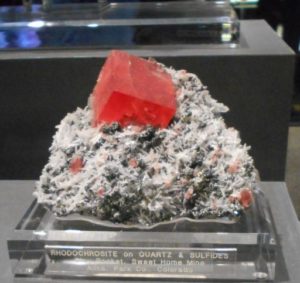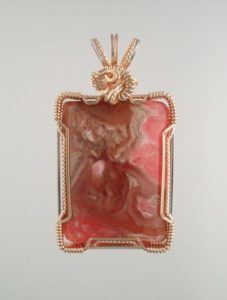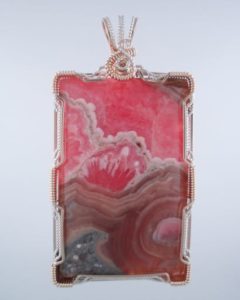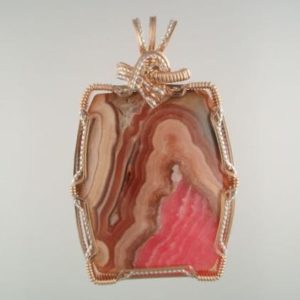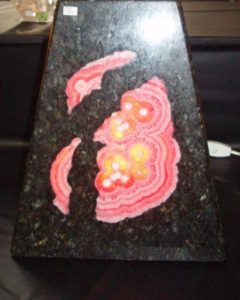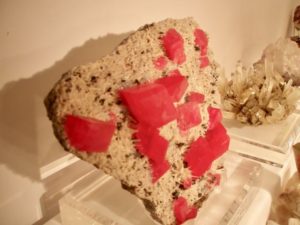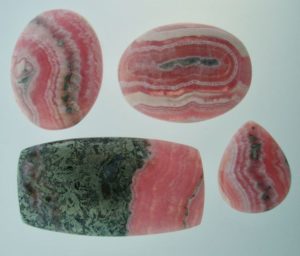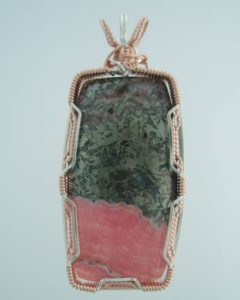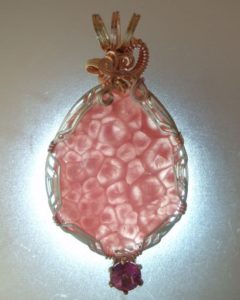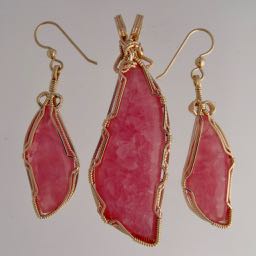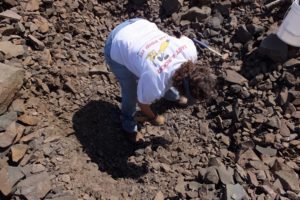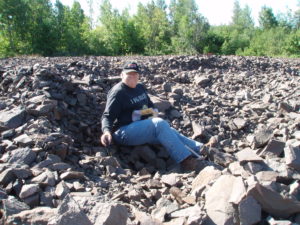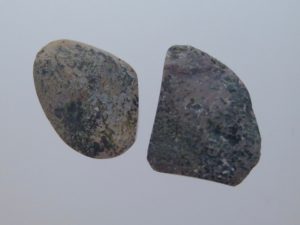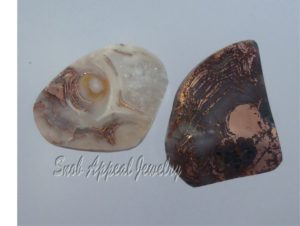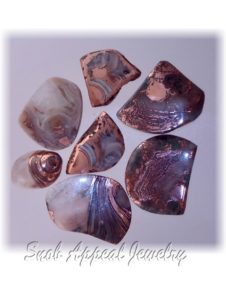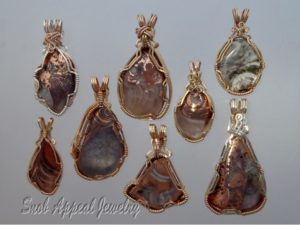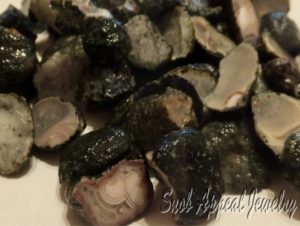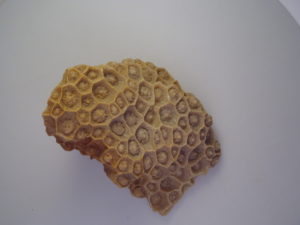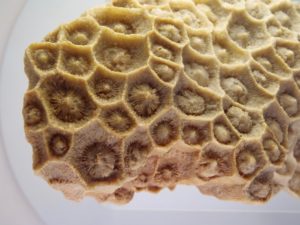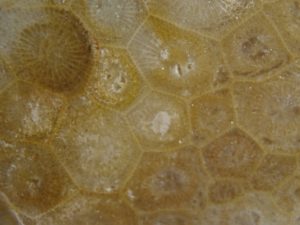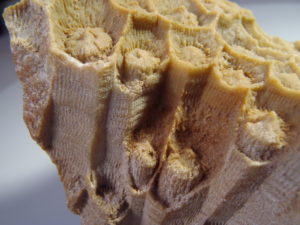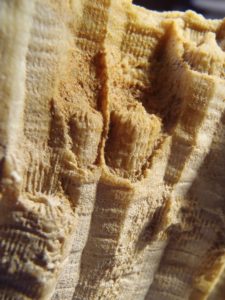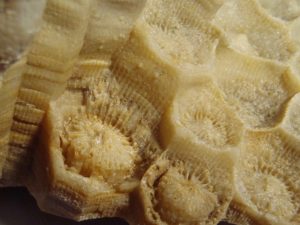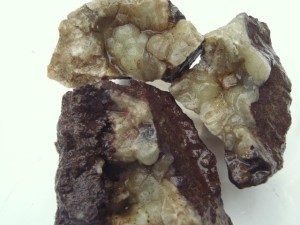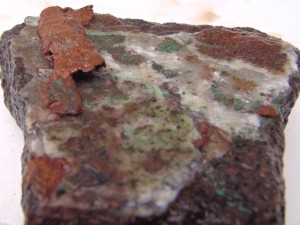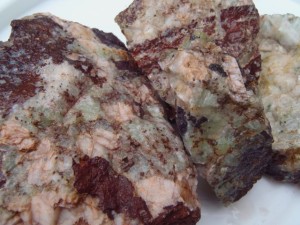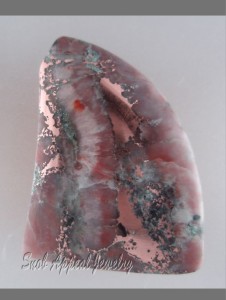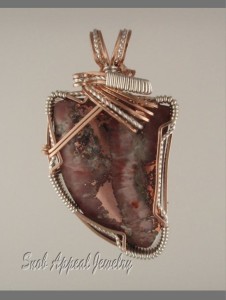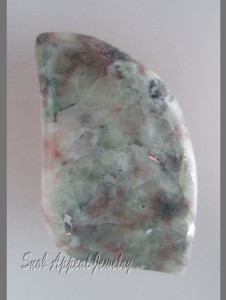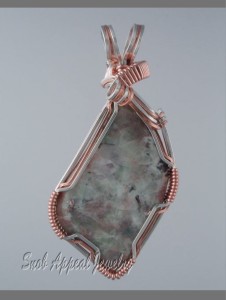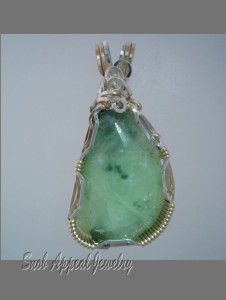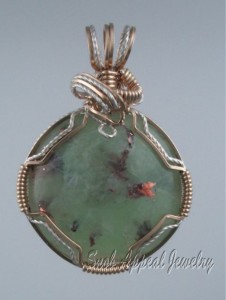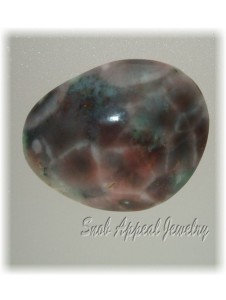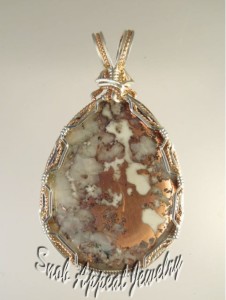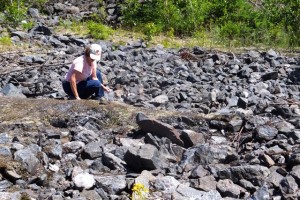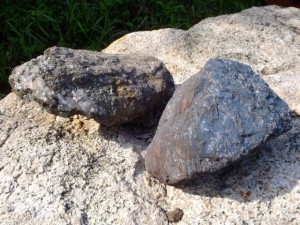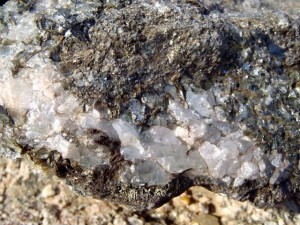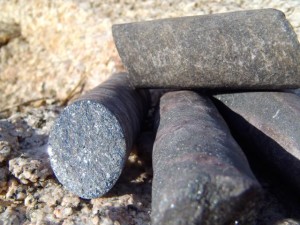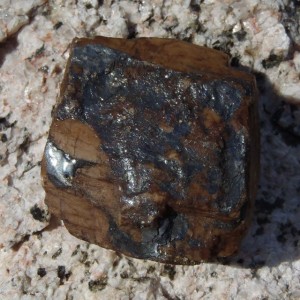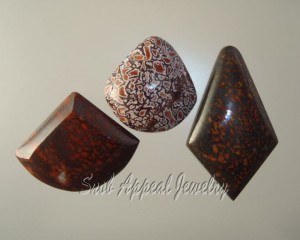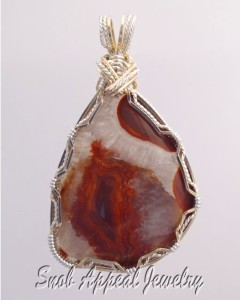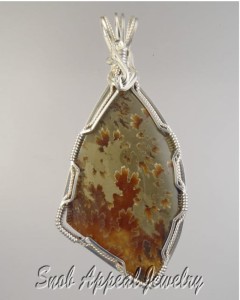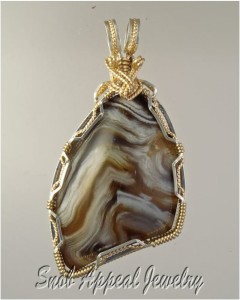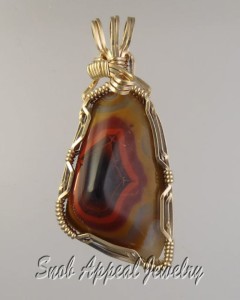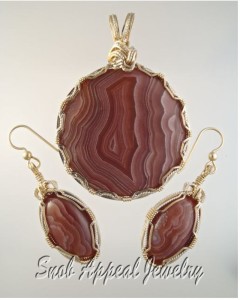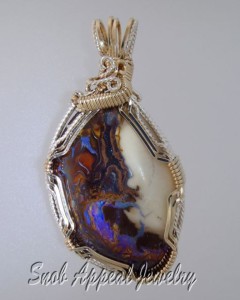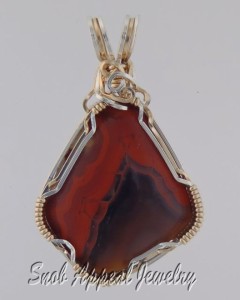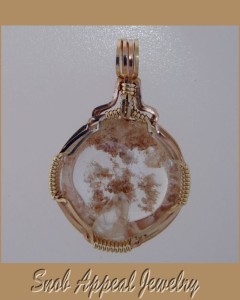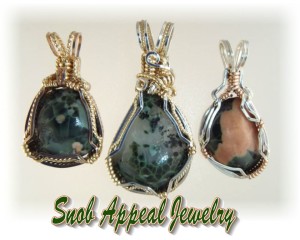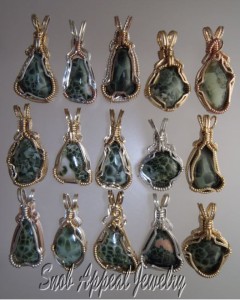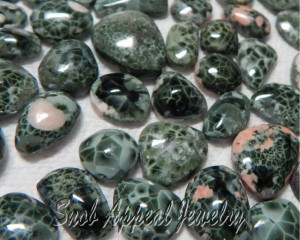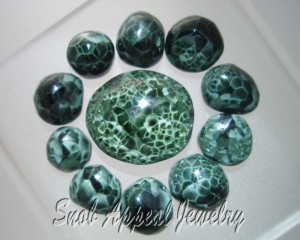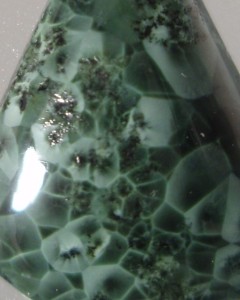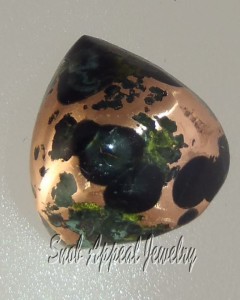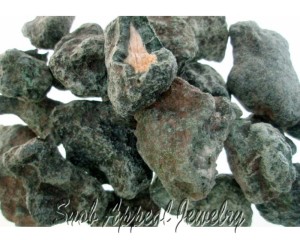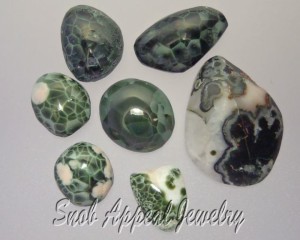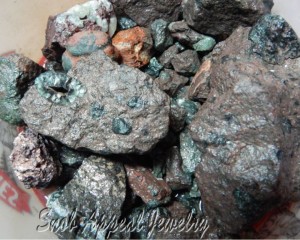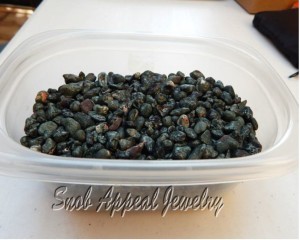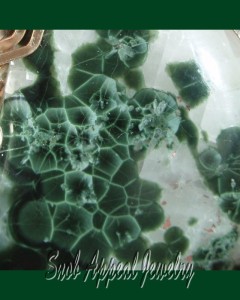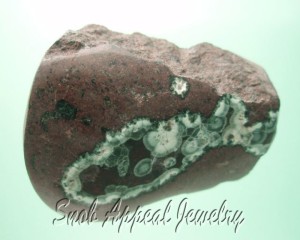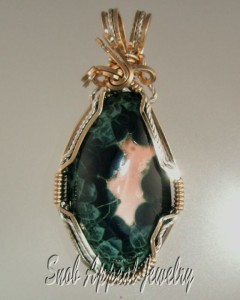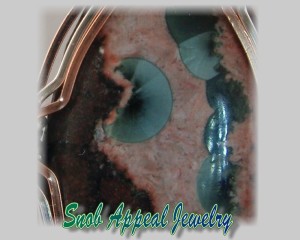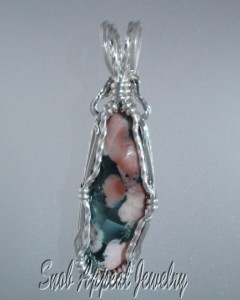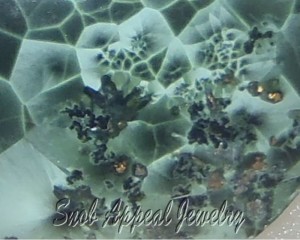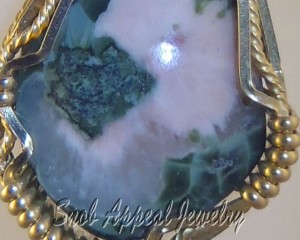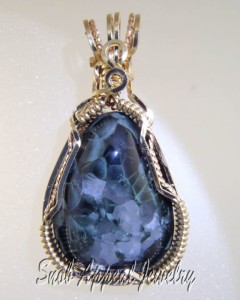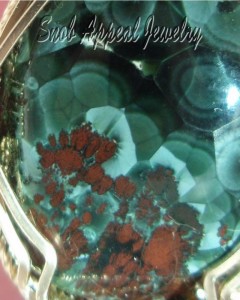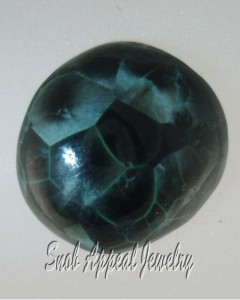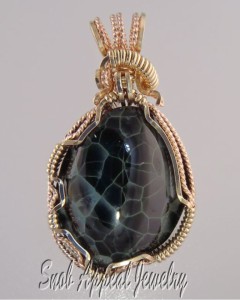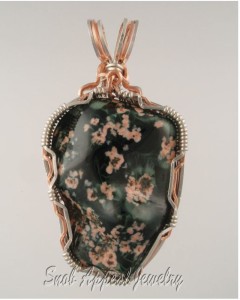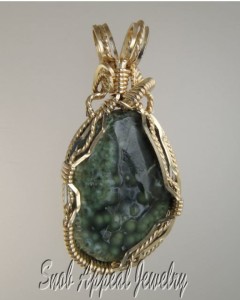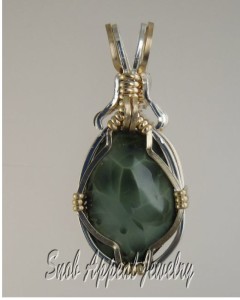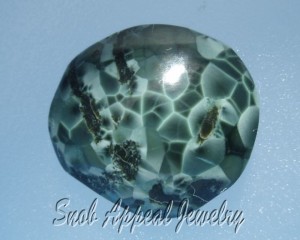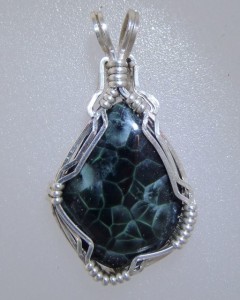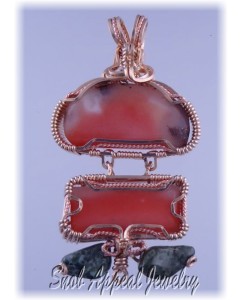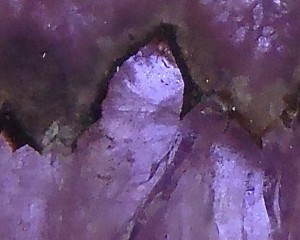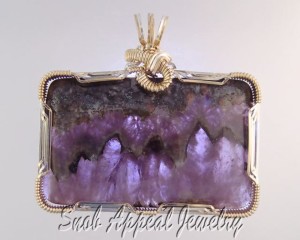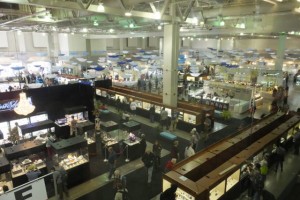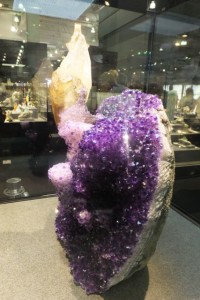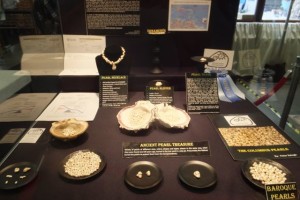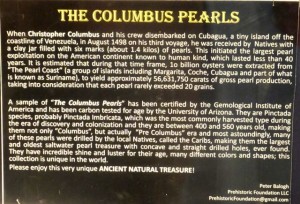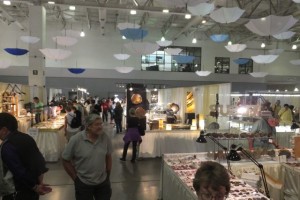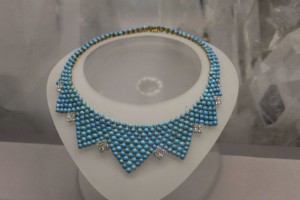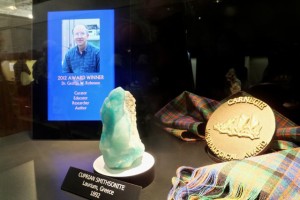I make Rhodochrosite jewelry from many lovely varieties of the stone. This week I finished a special piece which I’ll share with you, but lets look at some other pieces first!
Rhodochrosite is not the best known gemstone in the world, but it is very beautiful. Few gems can match the gorgeous variety of pink colorations in Rhodocrosite. The light pink Rhodochrosite yields fascinating beads and carvings of animals, or other shapes. The more gem-like bright pinks are the ones I try to use for jewelry. More transparency in the Rhodochrosite, the more valuable it becomes.
Rhodochrosite gets its’ name from two Greek words “Rhodon” meaning rose, and Chroma meaning color. I have seen this Manganese Carbonate in colors ranging from Brown to almost Red. Sometimes Calcium, or other minerals or metals often substitutes for Manganese and cause banding of various shades in Rhodochrosite.
The majority of Rhodochrosite comes from Argentina, but it is found in various localities around the world, even in Michigan. The finest Rhodochrosite ever found was located at the Sweet Home Mine near Alma, Colorado, where a few pockets produced several million dollars worth of fantastical cubic, transparent, Rhodochrosite. The Alma King and The Alma Rose are the top two speciments in the world.
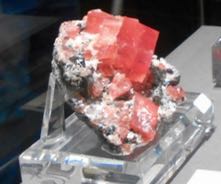
Sweet Home: Most specimens from the Sweet Home have names. Anyone knowing the names of these specimens, please let me know.
The Sweet Home Mine originally was a silver mine where the Rhodochrosite was a related mineral. Years after the silver played out, the mine was re-opened as Rhodochrosite became popular as a gemstone. The history of the search and ultimately the discovery of Crystal Rhodochrosite in the Sweet Home is enthralling.
It used to be that the second-class brown Rhodochrosite in Argentina was discarded, but within the past 10 years these old spoil piles have been revisited. “Brown Rhodochrosite”, as it is known, has become quite popular for jewelry. It is commonly a mix between the normal banded pink, and banded brown, often with pockets and holes. I love the brown Rhodocrosite, as do others based on the rapid rise of the price of the rough. If you want a Rhodocrosite with character, brown Rhodocrosite is the ticket.
JAPANESE BOYTRYOIDAL RHODOCHROSITE
I was wandering one of the big wholesale shows a few years back and found a Japanese vendor that had some old Rhodo from the Oppu Mine in Japan. This locality near Naka- Tsugaru-gun, Aomori Prefecture, Tohoku Region, Honshu Island produced Botryoidal (bubbly looking) Rhodochrosite as well as deep pink crystalline Rhodochrosite, suitable for faceting. I had heard of this material and never seen it is person. Some Japanese Rhodochrosite seems to be a gemmy cross between Amethyst and Rhodochrosite (I would call it a dark Raspberry). The Japanese vendor said he has a stash and releases a few pieces every year. People walked right by this ultra-rare Rhodo all day with very few even looking at it. He was a gemstone dealer and he specialized in this Japanese Rhodocrosite jewelry.
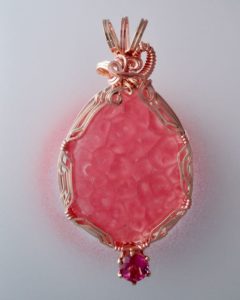
An amazing botryoidal Rhodochrosite (Probable Japanese), I found in a random bucket of rocks I bought in an estate sale. I searched the entire bunch of rocks from that estate and never found any more of this.
Concentric bands form bullseyes in some stalactites of Rhodochrosite, but Rhodochrosite also comes in wonderful transparent massive forms of rich pink. Although not Sweet Home transparent, the bright rose color of this material is amazing. Some of this massive Rhodo is not banded but seems to be a compacted Rhodochrosite crystals.
INCLUSIONS IN RHODOCHROSITE
At the major shows in Tucson we may also see Rhodocrosite with Manganese (tree-like inclusions), as well as Silver inclusions. I usually buy a few of these if I find nice pieces. This Rhodochrosite fits well with our credo of providing unusual and rare gemstones in our jewelry. I could say much more about Rhodochrosite, but I’m not writing a textbook here.
I will mention also that my metaphysical friends love Rhodochrosite for its’ love and healing abilities. I don’t know much about metaphysically powers, but who doesn’t need some love and healing at times?
Please visit our Rhodochrosite Jewelry page to see our currently available pieces.


